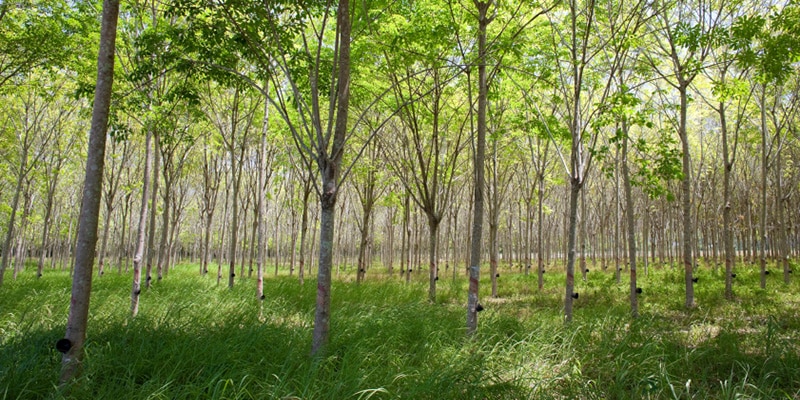Savvy Rest was the first organic mattress company in the U.S. to post organic certifications and independent test results on its website. We have always made clear that although the raw materials of the Savvy Rest mattress casing are certified organic, there has been no formal organic certification program for the latex itself.
That has changed!
Making It Official
The natural Dunlop latex we receive is the purest latex available in the world. Although the rubber trees on our supplier’s plantations have always been grown organically, the plantations themselves are now also certified organic according to USDA standards. We are delighted with this achievement, as many people value objective certification. We’re also pleased to see how fast worldwide interest in organic materials is progressing. As ever, at Savvy Rest we specify, order and use only natural latex in our mattresses. And to share the evidence with our customers, we continue to confirm through independent testing that our mattress core material is natural latex, not a synthetic blend.
Baking Basics
Even though the rubber trees are grown organically, however, latex still needs to be processed into a usable form. The thick, sticky serum from a rubber tree can’t be baked directly into foam rubber, any more than one could put a cup of milk into the oven expecting a custard to come out.
As purity testing shows, even natural latex (and ours is as natural as it gets) is about 95% percent pure rubber. To make the sap into foam, the manufacturing process requires small amounts of sulfur as the primary vulcanization agent, and zinc oxide as an accelerator. These are both natural ingredients.
Necessary Additives
The vulcanization process also requires adding minute amounts of synthetic chemicals. Which ones? Latex manufacturers still regard that information as proprietary and realistically, that probably will not change in the short term. But we can tell you that the presence of the tiny amounts of additives necessary to turn raw sap into supple, comfortable foam is not something to fear. What’s “tiny”? Their volume is referenced in micrograms per cubic meter, which is like a fraction of a grain of sand. More importantly, as you can see in the test results, “volatile organic compounds” (“volatile” means unstable, which means they off-gas) are routinely tested for. Note the designation “ND” for the vast majority, which means: Not Detected.
Beware “Zero” Claims
If a manufacturer, salesperson or web site tells you that their latex production process uses zero chemicals, consider this Wikipedia article on vulcanization. As it states, if one tried to make natural latex without using an accelerator, the resulting product would be of poor quality.
Some of our customers are chemically sensitive and need the purest materials in existence. And some people have a true latex allergy. For people with these concerns, it’s a good idea to pick up a sample from a Savvy Rest dealer, or order natural latex samples from us. You could also take the latex to an allergist or immunologist for consultation if you are concerned about allergy. You could even hire a materials testing lab—but it would be hard to do better than those we already use.
Safe Sleep
We hope this news of organic Dunlop latex certification will help to build confidence for anyone who has strong concerns about what’s in the products they eat, wear, and sleep on. We’re with you—the same concerns inspired us to develop Savvy Rest organic mattresses in the first place!
